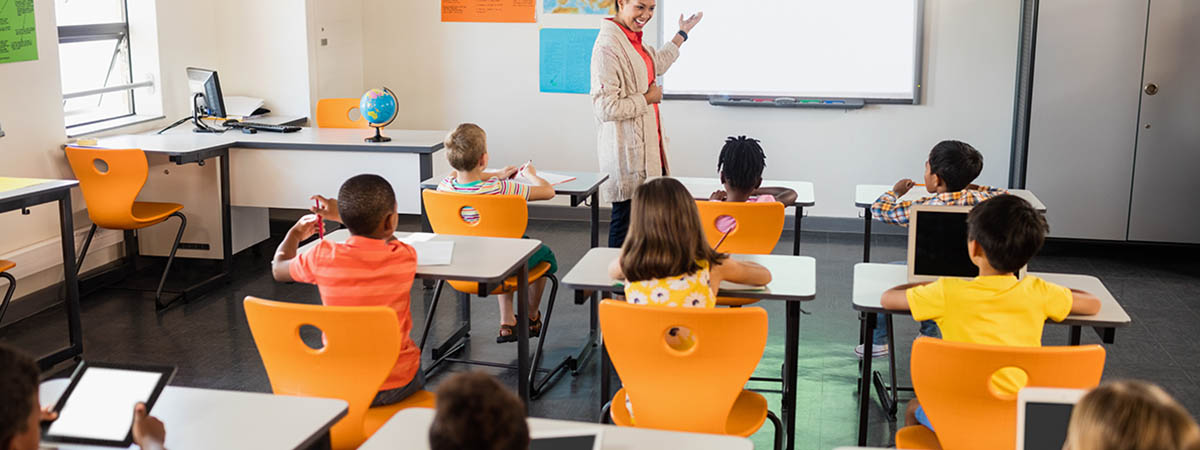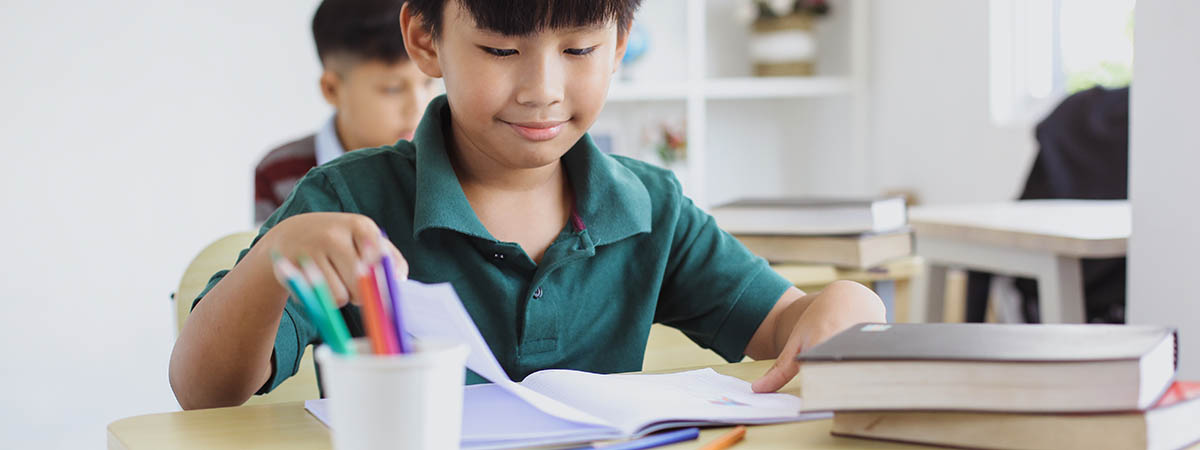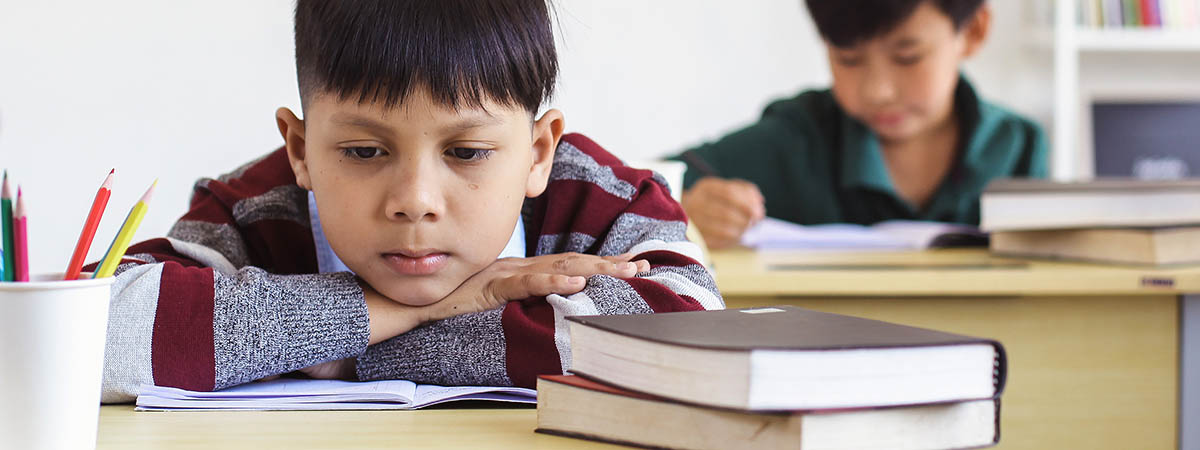By Dr. Christina Murray, O.D. — founder of Center for Better Learning in Coconut Creek, FL. Dr. Murray is originally from Columbus, Ohio, and is a proud graduate of The Ohio State University. She happily escaped the cold Ohio winters to attend optometry school at Nova Southeastern University. While in school, she discovered her passion for pediatrics and vision therapy. She is currently finishing up her board certification from the College of Optometrists in Vision Development.

Imagine a classroom of fifth graders sitting at their desks while their teacher presents a lesson on the solar system. She presents an array of images and bulleted points on the planet's properties, all while elaborating on the details. Students in the class diligently take notes on the subject matter. Let’s look at two students in the class:
Student A:

This student is sitting at their desk with both feet flat on the floor. Their notebook is placed centered on the desk in front of them, pencil placed gently in their right hand, while their left hand supports the notebook. They are effortless shifting their attention from the board to their notebook as they write down important notes. Each change in gaze is quick and accurate, allowing them to easily find where they left off. As the teacher speaks, they listen to the information she presents, and match it with the information presented on the board. They write down the important notes neatly in their notebook. They pay no attention to a classmate waiving and tapping their pencil at the desk beside them. After school, they have a snack and immediately get to work on their homework assignments and study for the quiz they have on the planets the next day. They take out their notes and read through them a few more times. As they read, they can visualize each planet in sequential order. They attached the important details of each one to the mental images they create. They finish their homework promptly and have time to relax before bed. The next day they score 100% on their science quiz.
Student B:

This student is sitting at their desk with their feet wrapped around the legs of their chair. Their notebook is placed off to the right side of their desk, their pencil is tightly gripped, while their left arm is draped across their notebook. Each time they shift their attention from the board to their paper and back to the board, their eyes feel weird, and their vision gets blurry for a few seconds as they search for where they left off. They are frantically trying to write down every word the teacher says, needing to stop frequently to shake out their hand. They are shifting their attention from what the teacher is saying to what is written on the board. As they try to focus on the lecture, their attention keeps getting pulled to the student beside them, waiving and tapping their pencil on their desk. After school, they go home and lay down on the sofa and watch television because they are too tired to get their homework done. After 45 minutes of prompting from their parents, they finally sit down to do their homework and study for their quiz. After an hour of working on their homework assignment, they pull out their notes from class. They spend the next hour trying to decipher their handwriting, remember what was said in class that day, look up missing information on the internet. They study by repeating the information over and over. Eventually, they feel confident they learned the material for the quiz and go to bed. The next day they score 100% on their science quiz.
Each of these students is considered an exemplary, hardworking student. Each one has good grades and is considered a joy to have in the classroom by their teacher. The difference between these students is how much effort is needed to achieve the same outcome. Efficient learning requires a sequence of developmental processes that begin before a child is even born! Stay tuned over the next few weeks as we break down these developmental stages and dive deeper into how these gaps in development in the early stages can have a huge impact on the reading and learning processes later in life.
If you would like to make an investment that lifts lives, brightens futures and strengthens the community, consider helping us. Please use the donate buttons below to select a secure method of online payment through PayPal, which allows donations by debit or credit card (PayPal keeps a two percent transaction fee for each donation).